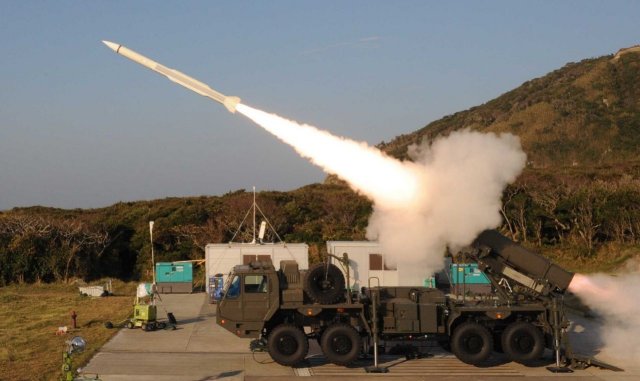Breaking news
Successfull test-fired by the Japan Ground Self-Defense Force for Chu-SAM Kai surface-to-air missile 41311151.
|
|
|||
|
Defence & Security News - Japan
|
|||
|
|
|||
| Successfull test-fired by the Japan Ground Self-Defense Force for Chu-SAM Kai surface-to-air missile | |||
|
The Japan Ground Self-Defense Force (JGSDF) has successfully test-fired the Chu-SAM Kai surface-to-air missile, destroying 100 percent of its targets at the White Sands Missile Range in southern New Mexico, the United States Army website reports.
|
|||
|
|
|||
 Chu-SAM Kai surface-to-air missile launcher Chu-SAM Kai surface-to-air missile launcher |
|||
|
|
|||
|
WSMR is a premiere location for missile and air defense system testing, and the Japanese Ground Self Defense Force takes full advantage of the range annually to conduct the acceptance test for their existing Chu-SAM missiles. Chu-SAM is a medium range surface-to-air guided missile system developed and produced domestically in Japan. The Chu-SAM Kai is an improved type of the Chu-SAM system equipped by the JGSDF, and has been undergoing evaluation since 2014 including the series of launches at White Sands Missile Range. Like other air defense systems of its type, Chu-SAM uses a combination of separate components, including command centers, radars, and launchers to create a single system. The test took advantage of WSMR's large size and controlled airspace, as well as its extensive instrumentation and data collection capabilities. "We don't have the kind of ranges in Japan needed to satisfy the requirements of the Chu-SAM Kai tests," said Kazuhiro Tobo, Chu-SAM Kai test commander with the Technical Research & Developmental Institute. "Also, Kai is a complex system in which each sensor is networked to intercept anti-aircraft threats." The test, which saw 100 percent of its targets successfully intercepted, impressed even the experienced WSMR test team. "The Japanese test team we work with is excellent, they are highly experienced and trained to know what they need to succeed." said Henry Sedillo, WSMR's Chu-SAM Kai Test Officer. This test series included the intercept of a GQM-163A Coyote, a U.S. Navy target system used to represent supersonic cruise missile and anti-surface missile threats. According to the Navy's Aerial Targets and Decoys Program Office, the Coyote is capable of representing several different threats. Cruising at a low altitude, the system can represent a supersonic anti-surface missile, or the target can climb to a high-altitude and descend at a supersonic speed to represent an air launched or ballistic threat. While adding a system like the GQM-163 to the list of targets authorized for use on the range can be challenging, now that the system is cleared for use, other test missions can also employ the target, opening the door for more complex guided missile tests like the Chu-SAM Kai program. "It's the first time that target has been flown here at White Sands," Sedillo said. "Normally it's flown at the Navy's Sea Range at Point Mugu, and so we are happy to have it here at White Sands." The tests this year were largely conducted by personnel from the Technical Research and Development Institute, the systems development arm of Japan's Ministry of Defense. If the program proceeds as expected, Chu-SAM Kai will return to WSMR in 2016 for operational testing by the JGSDF members. |
|||



















